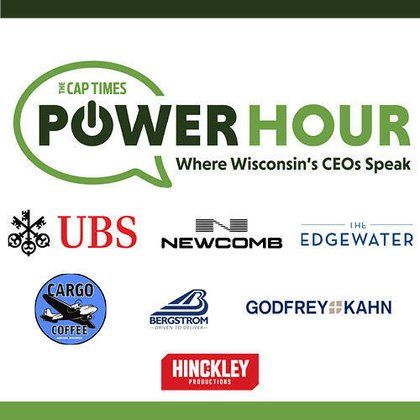By Tom Still
WAUSAU, Wis. – A black-and-white photograph on an office wall at the Greater Wausau Chamber of Commerce depicts civic leaders behind the economic change shaking that Wisconsin River city more than a century ago. It also speaks to the future – not only for Wausau, but similar communities in the state.
Nine members of “The Wausau Group,” mainly lumbermen and other business executives, came together as the lumber trade was fading to envision how to keep the city and region thriving. The core answer was attracting more diverse manufacturing and emerging businesses, such as insurance and even specialty crops such as ginseng. Some of their names remain tied to Wausau institutions today: D.C. Everest and Cyrus Yawkey are examples.
Economic dynamism means nothing stays the same forever, so Wausau and Marathon County – like other regions in Wisconsin – are contemplating new ways and undergoing visible change in some cases. The board of directors for the Wisconsin Technology Council had a chance to witness such transformation in a recent working visit to the city.
It won’t happen elsewhere without a sense of purpose, however.
“What is happening right now in rural Wisconsin scares me,” said Dave Eckmann, who leads the Wausau chamber, which extends into Marathon County. He cited demographic trends, healthcare access, support for education and child-care options for working families as leading examples.
Rather than wring his hands, however, Eckmann and others have pursued a “grow our own” plan that seeks to build on existing civic and natural strengths. A nationally known kayak course traverses parts of downtown Wausau; Wisconsin’s second-highest peak looms on the horizon; and new businesses, mostly small, are cropping up in revitalized areas.
The city is also gaining a reputation for being an under-the-radar startup hub. Marketbeat.com recently ranked 100 “hidden gem cities” for startups and Wausau was 63rd on the list, citing new companies in healthcare and manufacturing, as well as the local support system and cost of living. Oshkosh and Stevens Point were 73rd and 74th, respectively, on the same list.
Access to capital is the lifeblood for young companies. The Tech Council board meeting featured leaders from all five recipient funds that make up the two-month-old “Wisconsin Innovation Fund.” That is a public and private fund-of-funds set up through the Wisconsin Economic Development Corp. Those five funds have collectively made a half-dozen investments thus far under a directive to look for deals in underserved areas.
With Competitive Wisconsin Inc. as a partner, the chamber has launched a “Rural Resurgence” project to examine some of the “scary” trends and statistics cited by Eckmann, with an eye toward offering solutions – much like “The Wausau Group” at the turn of the 20th century.
Attracting and retaining workforce is among them, which is why focusing on “placemaking” is among the strategies. People won’t come or stay without good reasons. Healthcare assets and schools, both K-12 and higher education, are also part of the answer. In Wausau’s case, it has both a two-year campus tied to UW-Stevens Point and Northcentral Technical College, which offers degrees, certificates and other training in most of the businesses and industries indigenous to the region.
The toughest nut to crack may be healthcare, which has huge challenges nationally but especially in rural America. UW-Eau Claire Chancellor Jim Schmidt was on hand in Wausau to outline the “Rural Health Innovation Alliance” project, which was launched in the Chippewa Valley with the goal of spreading ideas and best practices nationwide if not beyond.
Calling it a “sandbox” for ideas and experiments, Schmidt said the growing alliance will focus on efficiencies, access and technologies that can change healthcare delivery today. “The economics of healthcare are failing everyone,” said Schmidt, who noted rural areas are ripe for health delivery options.
As I noted in a May column, Wisconsin is a state with two economies – one largely urban and more prosperous, the other predominantly rural and challenged. It need not be that way. As was true more than a century ago, don’t underestimate the ability of small groups of people to make things better.
Still is president of the Wisconsin Technology Council. He can be reached at news@wisconsintechnologycouncil.com.





